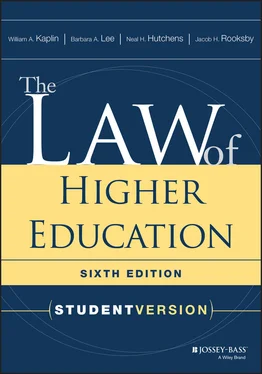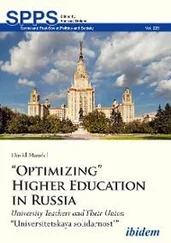The majority rule that landowners are liable only for those injuries on their property that are foreseeable remains intact, but courts are differing sharply on what injuries they view as foreseeable. For example, in Pitre v. Louisiana Tech University , 655 So.2d 659 (La. Ct. App. 1995 ), reversed , 673 So.2d 585 (La. 1996), the intermediate appellate court had found the university liable for injuries to a student who was paralyzed during a sledding accident. When a rare snowstorm blanketed the university's campus, the administration issued a written warning to its students, placing it on each student's bed, urging them to use good judgment and to avoid sledding in dangerous areas. Pitre and two classmates used a trash can lid as a sled and rode it down a hill; Pitre struck the base of a light pole in a university parking lot. The appellate court ruled that the university had a duty to prevent unreasonably unsafe student activities and viewed the written warning as an encouragement to engage in sledding. Although the court acknowledged that Pitre's own behavior contributed to his injuries, it found the university 25 percent liable.
The Supreme Court of Louisiana reversed, reasoning that the danger encountered by Pitre and his friends was obvious to a reasonably careful invitee. The court stated that, since sledding is not inherently dangerous, the university could not foresee that Pitre would select a location unsuitable for sledding; furthermore, said the court, it was reasonable for the university to install light poles as a safety mechanism. The court ruled that the university bore no liability for the plaintiff's injuries.
Premises liability claims may also arise when an invitee misuses a college or university building or other property of an institution, but that misuse is claimed to be foreseeable. For example, in Robertson v. State of Louisiana , 747 So.2d 1276 (La. Ct. App. 1999), parents of a 23-year-old senior student sued Louisiana Tech University for negligence after their son died from falling from the roof of a campus building. The university had built a roof over its swimming pool; the roof, whose apex was 56 feet high, extended to within several feet of the ground. The son had climbed onto the roof after spending the evening drinking with friends. There had been several earlier incidents of students climbing on the roof; in all cases the students were intoxicated, and in two cases the students had been seriously injured. The parents of the student who died claimed that, because of these earlier climbing incidents, the injury to their son was foreseeable, and the university should have erected some form of barrier to prevent students from climbing onto the roof. Despite the university's knowledge of the earlier climbing incidents, and testimony that a modest investment in shrubbery would likely have prevented future climbing expeditions, the court ruled that the roof was not unreasonably dangerous, that the danger of falling off the roof was obvious, and therefore that the university owed no duty to prevent the student from climbing onto the roof. For a case involving a trespasser's death after climbing a cliff on college property, in which the court entered summary judgment for the college, see Blust v. Berea College , 431 F. Supp. 2d 703 (E.D. Ky. 2006). And for an application of the assumption of risk doctrine in a case in which a student sued New York University when he was injured during a Jell-O wrestling event in a residence hall courtyard, see Wisnia v. New York University , 239 N.Y.L.J. 24 (N.Y. Sup. Ct. January 23, 2008).
Colleges and universities in Florida have gained some protection from liability in cases such as Nicholson . The legislature of Florida has enacted a law creating a potential bar to recovery in a negligence lawsuit if the plaintiff is voluntarily intoxicated by drugs or alcohol and the court determines that the plaintiff is the primary cause of his or her injuries (Fla. Stat. Ann. § 768.075 (West 2011)). The statute also exempts property owners and their agents from liability for injuries to trespassers.
Invitees have attempted to impose tort liability on a college when some form of criminal activity on campus results in injury. Again, the majority rule is that the criminal activity must have been foreseeable. For example, in Nero v. Kansas State University , 861 P.2d 768 (Kan. 1993), the Kansas Supreme Court reversed a summary judgment award for the university and ordered the case to be tried, ruling that a jury would need to decide whether the rape of a student by a fellow student in a residence hall was foreseeable because the alleged rapist had been accused of an earlier sexual assault on campus and university officials were aware of that fact when they assigned him to live during summer session in a coed residence hall. But in L.W. v. Western Golf Association , 712 N.E.2d 983 (Ind. 1999), the Indiana Supreme Court ruled that the owners of a “scholarship house” at Purdue University were not liable to a student who became intoxicated and later was raped in her room by a fellow scholarship house resident. Finding that there was no record of similar incidents that would have made such a criminal act foreseeable, the court refused to impose liability.
The legal analysis is similar when plaintiffs allege that an injury occurring at a recreational event sponsored by the college was foreseeable. The Supreme Court of Kansas ruled that Wichita State University (WSU) was not liable for the death of an invitee who was shot by a gang member after a fireworks celebration on campus. In Gragg v. Wichita State University , 934 P.2d 121 (Kan. 1997), the children of the invitee, Ms. Gragg, claimed that the university and several corporate sponsors of the fireworks program failed to provide adequate security, that the lighting was inadequate, and that the defendants had failed to warn the victim that there had been criminal incidents near the WSU campus. The court ruled that the university and other defendants did not owe Gragg a legal duty to protect her from the criminal act of a third party. Since the WSU police did not know that the assailant was on campus or that he intended to shoot a rival gang member, the shooting was not foreseeable. The court distinguished Nero because, in Nero , the university was aware of the assailant's previous criminal record. No such knowledge was present in this case. Furthermore, similar celebrations had been held on campus for the prior 17 years; no shootings or other violent crime had taken place.
But in Hayden v. University of Notre Dame , 716 N.E.2d 603 (Ind. Ct. App. 1999), a state appellate court reversed a summary judgment award for the university. A football fan with season tickets was injured when a football was kicked into the stands and spectators lunged for it. The plaintiff argued that the university should have protected its spectators from being injured and that lunging fans were common at Notre Dame football games. The court ruled that because there were many prior incidents of fans lunging for footballs, Notre Dame should have foreseen the type of injury sustained by the plaintiff. Given the foreseeability of this behavior, the court ruled that Notre Dame owed the plaintiff a duty to protect her from injury.
Even if a college is not the owner of the premises alleged to be dangerous, if it has some control over that property, or if students have access to the property, the college could be liable for injuries related to that property. For example, in Ginsburg v. City of Ithaca, Cornell University et al ., 839 F. Supp.2d 537 (N.D.N.Y. 2012), the father of a Cornell student who had committed suicide by jumping from a bridge on the Cornell University campus in 2009 sued Ithaca (which owned the bridge) and Cornell for negligence. The father claimed that, because 29 individuals had jumped from several bridges on or near Cornell's campus since 1990, Cornell and Ithaca had a duty to “implement appropriate suicide prevention measures on the bridge” when it was redesigned and reconstructed 2 years earlier. The trial court ruled that “it was clearly foreseeable that someone may commit suicide” by jumping from the bridge used by the son and rejected Cornell's motion for summary judgment. The court explained that, “given the history of suicides and suicide attempts, defendants' public acknowledgement of the phenomenon, and the bridge's accessibility to a student population—15 percent of which regularly considers suicide—shows defendants had actual, or at least constructive, knowledge that a suicide attempt from the bridge was foreseeable” [839 F. Supp.2d. at 541]. Landowners and landlords also have a duty to provide accurate information about potentially dangerous conditions to independent contractors working on their property. For a discussion of this duty, see Bennett v. Trevecca Nazarene University , 216 S.W.3d 293 (Tenn. 2007). Cornell University, which has several open gorges that cut through its campus, has faced other lawsuits involving student death or injury on those premises. See, for example, King v. Cornell University , 973 N.Y.S.2d 534 (N.Y. App. Div. 2013) (denying summary judgment to university in premises liability action based on student's death from falling into steep cliff while traversing university-maintained hiking trail at night while intoxicated).
Читать дальше












